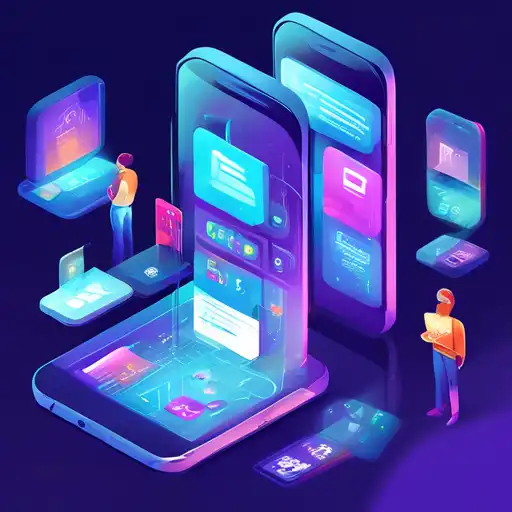Introduction to Mobile Development Trends
The mobile development landscape is constantly evolving, with new technologies and methodologies emerging at a rapid pace. As we look towards the future, several key trends are poised to redefine how apps are developed, deployed, and experienced by users worldwide. This article explores these pivotal trends, offering insights into what developers, businesses, and consumers can expect in the coming years.
1. The Rise of 5G Technology
5G technology is set to revolutionize mobile development by enabling faster data speeds, lower latency, and more reliable connections. This advancement will not only enhance user experiences but also open up new possibilities for app functionalities, such as real-time cloud gaming and augmented reality (AR) applications.
2. Artificial Intelligence and Machine Learning Integration
Artificial Intelligence (AI) and Machine Learning (ML) are becoming increasingly integral to mobile apps. From personalized user experiences to advanced data analysis and automation, AI and ML are enabling smarter, more intuitive applications. Developers are leveraging these technologies to create apps that can learn from user behavior and adapt accordingly.
3. The Growth of Cross-Platform Development Tools
Cross-platform development tools like Flutter and React Native are gaining popularity, allowing developers to build apps for multiple platforms with a single codebase. This trend is reducing development time and costs, making it easier for businesses to reach a wider audience without compromising on quality or performance.
4. Enhanced Focus on App Security
As mobile apps become more central to our daily lives, security concerns are escalating. Developers are prioritizing secure coding practices and incorporating advanced security features to protect user data. Biometric authentication, end-to-end encryption, and secure APIs are becoming standard components of mobile apps.
5. The Expansion of Internet of Things (IoT) Integration
The Internet of Things (IoT) is expanding the scope of mobile apps, enabling them to interact with a wide range of devices and systems. From smart homes to wearable technology, mobile apps are becoming the control center for IoT ecosystems, offering users unprecedented convenience and control.
Conclusion
The future of mobile development is bright, with innovative trends shaping the way apps are created and used. By staying abreast of these developments, developers and businesses can leverage new technologies to build more powerful, secure, and user-friendly applications. As we move forward, the integration of 5G, AI, cross-platform tools, enhanced security, and IoT will continue to drive the evolution of mobile development.
For more insights into the latest in technology and development, explore our technology section.
